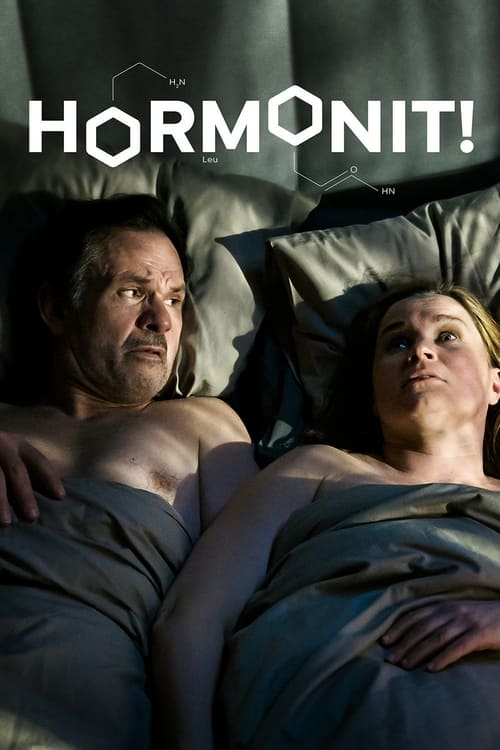
Ask Your Own Question
What is the plot?
In the opening scene of "Episode 6," the camera pans over a quiet suburban neighborhood at dawn. The sun rises slowly, casting a warm glow over the houses. Inside one of the homes, we find Mia, a single mother, waking up to the sound of her alarm. She looks tired and worn, reflecting the struggles she has faced in recent weeks. As she prepares breakfast for her two children, her internal conflict about balancing work and motherhood is palpable. She glances at her phone, checking for messages from her boss, which adds to her anxiety.
The scene shifts to the school where Mia's children, Lucas and Emma, are attending. The atmosphere is tense as the principal announces a new policy regarding parental involvement in school activities. Lucas, who has been struggling with bullying, feels the weight of this announcement. He shares his concerns with Emma, who tries to reassure him but is also worried about their mother's increasing stress. Their bond is evident as they support each other, showcasing their reliance on one another amidst their challenges.
Later, Mia receives a call from her boss, who pressures her to take on a new project that requires her to work late hours. Torn between her job and her children's needs, she reluctantly agrees, hoping to prove herself. This decision weighs heavily on her, and we see her internal struggle as she tries to justify her choice. The scene captures her frustration and guilt, emphasizing her desire to provide for her family while feeling like she is failing them.
As the day progresses, Lucas faces a confrontation at school with the bullies who have been tormenting him. The scene is intense, with Lucas standing up for himself for the first time. He pushes back against the bullies, but the situation escalates, leading to a physical altercation. Emma witnesses the fight and rushes to help her brother, showcasing their protective sibling dynamic. The fight ends with Lucas getting hurt, and the emotional fallout is significant as they both feel the weight of the incident.
Back at home, Mia arrives late from work, exhausted and frazzled. She finds Lucas nursing his injuries, and the tension in the room is thick. Lucas expresses his frustration about the bullying and how he feels unsupported. Mia, overwhelmed by her own stress, struggles to find the right words to comfort him. This moment highlights the growing rift between Mia and her children, as they all grapple with their individual struggles.
The next day, Mia decides to attend a school meeting to address the bullying issue. She is determined to advocate for her children, showcasing her fierce maternal instincts. At the meeting, she confronts the principal about the lack of support for victims of bullying. The principal's dismissive attitude infuriates her, and she passionately argues for a more proactive approach. This scene is pivotal as it marks a turning point for Mia, who begins to reclaim her voice and agency.
Meanwhile, Lucas and Emma devise a plan to confront the bullies together. They gather their friends and create a support group, emphasizing the importance of standing together against bullying. This subplot illustrates their growth and resilience, as they take matters into their own hands. The camaraderie among the children is heartwarming, and it serves as a counterbalance to the struggles they face at home.
As the episode progresses, Mia's relationship with her boss becomes increasingly strained. He pressures her to prioritize work over family, leading to a confrontation where Mia finally stands up for herself. She asserts her boundaries, stating that her children come first. This moment is empowering for Mia, as she begins to realize the importance of self-advocacy in both her personal and professional life.
The climax of the episode occurs during a school assembly where Lucas and Emma present their anti-bullying initiative. They speak passionately about their experiences, and the emotional weight of their words resonates with the audience. Mia watches from the crowd, filled with pride and a renewed sense of hope for her children. This moment signifies a shift in their family dynamic, as they begin to heal and support one another more openly.
In the final scenes, Mia returns home to find Lucas and Emma celebrating their successful presentation. The atmosphere is filled with laughter and joy, a stark contrast to the earlier tension. Mia joins in their celebration, and for the first time in a while, they feel like a united front. The episode closes with a sense of optimism, as the family begins to navigate their challenges together, reinforcing their bond and commitment to one another.
What is the ending?
In the ending of "Dear Children," Season 1, Episode 6, the characters face the culmination of their struggles and relationships. Tensions reach a peak as unresolved conflicts come to light, leading to significant decisions that will alter their paths. The episode concludes with a sense of uncertainty, leaving the characters at a crossroads, each grappling with their choices and the implications for their futures.
As the episode unfolds, we begin in a dimly lit room where the main characters gather for a final confrontation. The atmosphere is thick with tension, and the air is heavy with unspoken words. Each character's face reflects a mix of anxiety and determination, as they know this meeting could change everything.
Scene 1: The Gathering The camera pans across the room, capturing the anxious expressions of the characters. They sit in a circle, the weight of their shared history palpable. The protagonist, Alex, takes a deep breath, his heart racing as he prepares to address the group. He feels a surge of responsibility, knowing that his words could either mend or break their fragile bonds.
Scene 2: The Confrontation As Alex speaks, his voice trembles with emotion. He confronts the unresolved issues that have plagued their relationships, particularly focusing on the rift between him and his childhood friend, Jamie. Jamie, visibly hurt, responds with a mix of anger and vulnerability, revealing his own struggles and feelings of betrayal. The tension escalates, and the room feels charged with unresolved emotions.
Scene 3: The Turning Point In a moment of raw honesty, Jamie reveals a secret that he has kept hidden for years, one that explains his actions and choices. The revelation shocks the group, and the atmosphere shifts from confrontation to understanding. Alex's expression softens as he realizes the depth of Jamie's pain, and he feels a wave of empathy wash over him.
Scene 4: The Decision With the air cleared, the characters begin to discuss their futures. Each one shares their hopes and fears, contemplating the paths they might take. Alex expresses a desire to pursue his dreams, while Jamie grapples with the idea of forgiveness and moving forward. The group collectively decides to support one another, vowing to stay connected despite the challenges ahead.
Scene 5: The Farewell As the meeting concludes, the characters share emotional farewells. There are tears and hugs, a mix of sadness and hope. Alex and Jamie share a poignant moment, acknowledging their past while looking toward a future where they can rebuild their friendship. The camera lingers on their embrace, capturing the essence of reconciliation.
Scene 6: The Open Road The episode ends with each character stepping out into the world, symbolizing new beginnings. Alex walks away with a sense of purpose, ready to embrace the unknown. Jamie stands still for a moment, reflecting on his journey before following suit. The final shot captures the group walking in different directions, each on their own path, yet forever connected by their shared experiences.
In this ending, the characters face their truths and make choices that reflect their growth. The episode emphasizes themes of forgiveness, the complexity of relationships, and the importance of support as they navigate their individual journeys. Each character's fate is left open-ended, inviting viewers to ponder their futures and the impact of their decisions.
Is there a post-credit scene?
In "Episode 6" of "Dear Children," there is indeed a post-credit scene that adds an intriguing layer to the narrative. The scene opens with a dimly lit room, where a single flickering light bulb casts shadows on the walls. The atmosphere is tense, filled with an air of uncertainty.
As the camera pans, we see one of the main characters, Mia, sitting at a table, her face illuminated by the soft glow of her phone screen. She appears deep in thought, her brow furrowed, reflecting a mix of anxiety and determination. The sound of her fingers tapping on the screen is the only noise in the otherwise silent room.
Suddenly, a notification pops up, and Mia's expression shifts from contemplation to surprise. The camera zooms in on her phone, revealing a message from an unknown number. The message reads, "I know what you did. Meet me at the old park at midnight."
Mia's heart races, and her eyes widen with a mix of fear and curiosity. The scene captures her internal conflict; she is torn between the desire to uncover the truth and the fear of what might happen if she goes. The tension builds as she glances at the clock, which ticks ominously, reminding her that time is running out.
The scene ends with Mia taking a deep breath, her resolve hardening. She stands up, determination etched on her face, and the screen fades to black, leaving viewers with a sense of anticipation for what lies ahead. This post-credit moment not only teases future developments but also deepens Mia's character, showcasing her bravery and the weight of her choices.
What is the significance of the flashback scenes in Episode 6?
The flashback scenes in Episode 6 provide crucial context for Mia's current emotional state. They reveal her childhood memories of happier times with her family, contrasting sharply with her present struggles. These moments serve to deepen the audience's understanding of her motivations and the weight of her past as she navigates her present challenges.
What significant event occurs in Episode 6 that impacts the main character's relationships?
In Episode 6, a pivotal confrontation occurs between the main character, Mia, and her estranged father, which forces her to confront her feelings of abandonment and betrayal. This emotional clash leads to a deeper understanding of her father's struggles and ultimately reshapes her perspective on family.
How does the character of Sam evolve in Episode 6?
In this episode, Sam grapples with his insecurities and the pressure to succeed. He faces a critical moment when he must choose between pursuing his passion for art or conforming to his family's expectations. This internal conflict showcases his growth as he ultimately decides to follow his heart, leading to a poignant scene where he shares his artwork with his friends.
What role does the school play in the events of Episode 6?
The school serves as a backdrop for the unfolding drama in Episode 6, particularly during a crucial assembly where secrets are revealed. The tension escalates when a rumor about Mia spreads, leading to a public confrontation that exposes the vulnerabilities of several characters, including Mia and her friends.
How does the friendship between Mia and her best friend change in Episode 6?
In Episode 6, Mia's friendship with her best friend, Lila, is tested when Lila feels overshadowed by Mia's personal struggles. A heated argument reveals underlying jealousy and misunderstandings, forcing both characters to reevaluate their bond and ultimately leading to a heartfelt reconciliation that strengthens their friendship.
Is this family friendly?
In "Dear Children," Season 1, Episode 6, there are several scenes and themes that may be considered potentially objectionable or upsetting for children or sensitive viewers.
-
Emotional Turmoil: The episode delves into themes of loss and grief, showcasing characters dealing with the aftermath of a significant event. This may evoke strong emotions and could be distressing for younger viewers.
-
Conflict and Tension: There are moments of intense conflict between characters, which may include raised voices and heated arguments. This could be unsettling for children who are sensitive to conflict.
-
Depictions of Vulnerability: Characters experience moments of vulnerability and despair, which may be difficult for some viewers to watch, especially if they relate to the characters' struggles.
-
Mature Themes: The episode touches on complex family dynamics and personal struggles that may not be easily understood by younger audiences, potentially leading to confusion or discomfort.
-
Visual Imagery: Certain scenes may include visual representations of emotional distress, such as characters crying or showing signs of anxiety, which could be upsetting for sensitive viewers.
Overall, while the show aims to convey important messages about family and resilience, the emotional depth and intensity of certain scenes may not be suitable for all children.





























